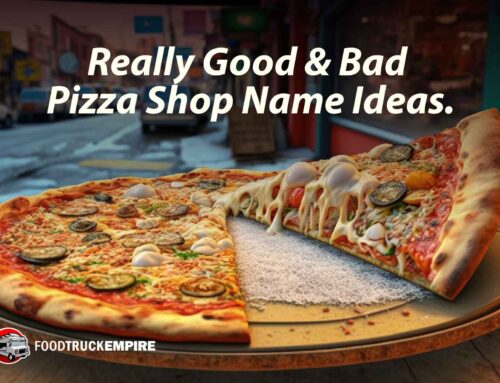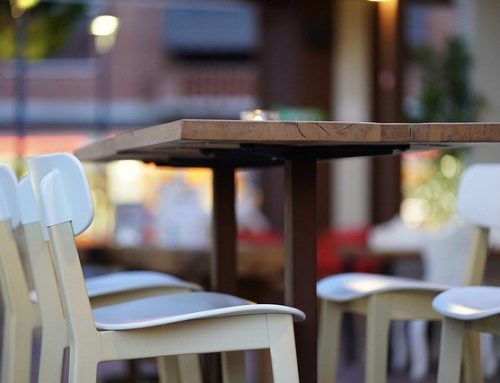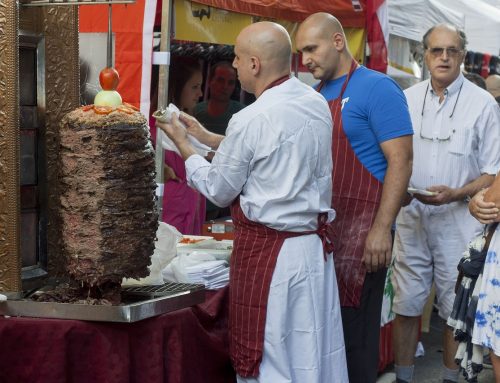When I first opened Ancho Honey, a small, takeout-focused restaurant in a tiny coastal fishing village in Maine, I was a little overwhelmed by the structure of the restaurant space. Located in a converted early 20th century residential farmhouse, the building wasn’t exactly crying out to be a restaurant; a side entry door led to a tiny room, which led to another tiny room, and another. There wasn’t a natural “flow” for customers walking in the door, and I wasn’t sure how to guide them and get them to do what I wanted once they walked in.
Rather than be concerned with the limitations of this residential floor plan, I tried to figure out some opportunities for using the different rooms, that would contribute to my business’ bottom line. I turned the first small room into an entryway/retail section, with shelves lined with house-branded sauces, spice blends, preserved foods, and other hard-to-find ingredients that I use in my own cooking, and which are somewhat hard to find in my local area.
Related Reading: How I Turned a Farm House into a Fully Licensed Restaurant
I expected my fledgling retail operation to be little more than an opportunity to help set the mood for the restaurant, and maybe provide a little extra work to do during the long winter months, when seasonal tourist traffic dries up and the customer flow slows to a trickle. I had romantic daydreams of myself holed up in my tiny restaurant kitchen, a blizzard raging outside, while I meticulously stockpiled jars filled with jams, chutneys, and my own customized hot sauces.
Instead, my first foray into retail has been much more of a success than I could have hoped. Instead of whiling away the afternoons, noodling on my stockpile of preserved foods, I find that as quickly as I can get things in jars, they’re flying off the shelves. Let’s take a look at some of the reasons why, and the ways in which a small, house-branded retail section can potentially help you expand your business.
Branded Items Extend Your Authority.
One of the trickiest marketing tasks in the restaurant business is figuring out how to establish your business as an authority in the field. After all, you don’t just want to serve hamburgers…you want people to know that you serve the best hamburgers in town (without resorting to a cheesy sign to explain it).
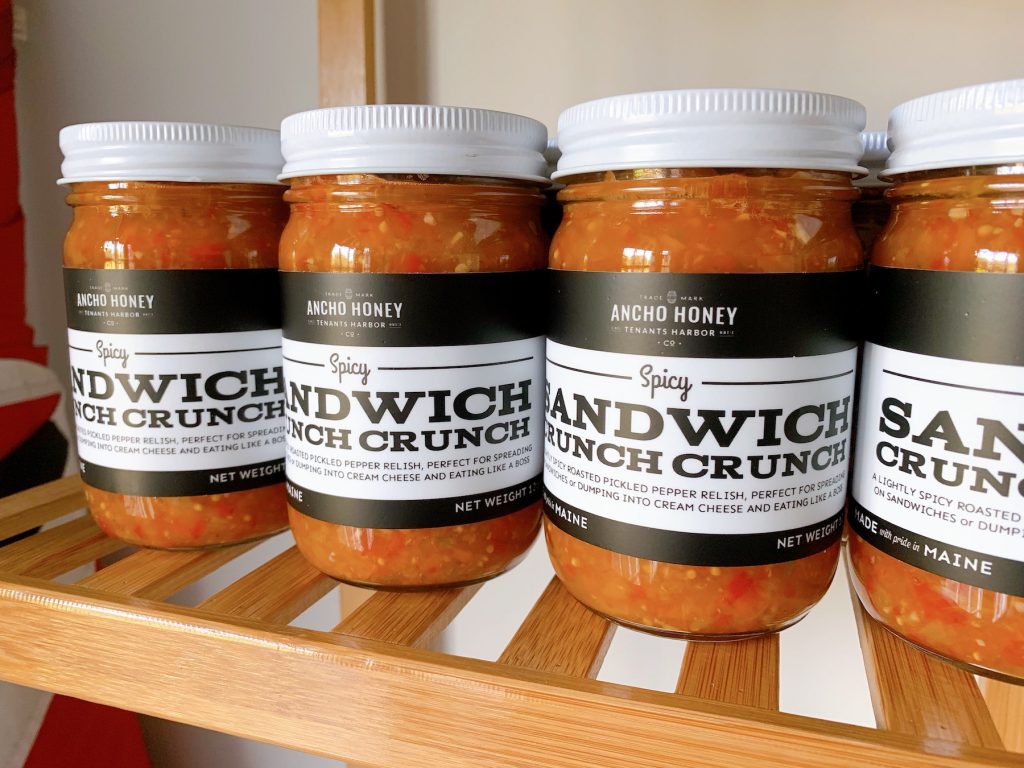
Packaging retail items for sale, complete with professionally designed labels featuring your restaurant’s logo and sealed, retail-ready jars (we use Fillmore Container for our packaging needs), is a very subtle way to communicate to your customers that you know what you’re doing, and that your product is so good, you can even sell it at retail for home use. Just like a website or a well-designed logo, a well-executed product makes a business feel real and communicates authority.
If you’ve never preserved anything for shelf-stability, and assume that it’s difficult, fear not. There’s a reason why water-bath canning was practiced all the way back in the 1800s, when kids had to drop out of school in the third grade to go and work in the coal mines. A few quick lessons on the concept, and you’ll be packaging small-batch products like a pro, using your already-licensed commercial kitchen to ensure the safety and health of your customers.

Branded Items Give People a Reason to Stop.
I happen to live in a place where certain products that are common everywhere else, are somewhat difficult to find. Curry paste. Super spicy salsas. Pickled onions.
While these are available in most national supermarkets, in my area, tracking them down can be difficult. I made the decision to start producing these items myself, and as one of the only sources in town for them, their availability gives potential customers a reason to stop.
Sure, you can buy Tabasco at the corner gas station. But if you want my triple-secret apricot habanero hot sauce, there’s only one place to get it. Creating these types of one-of-a-kind, small batch products gives potential customers a reason to stop, and chances are, you’ll be able to sell them something else once they walk in the door.
On Some Items, the Profit Margins Can Be Extraordinary.
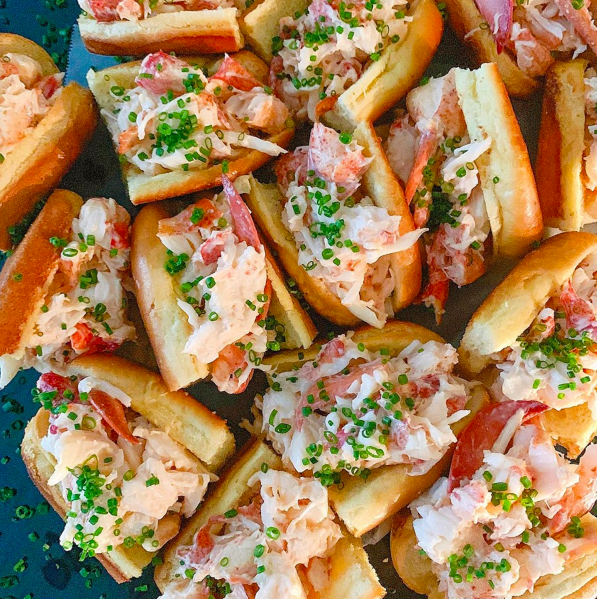
I have a very simple pricing model for my line of house-branded retail items: Everything costs the same amount. Whether it’s a jar of pickled onions, or a more elaborate sandwich spread with 12 ingredients (both of which have wildly different profit margins), I charge the same $6 bucks a jar for everything.
On some items, I’m barely breaking even, especially when you consider the time and labor cost involved in small-batch canning.* But less time-consuming recipes, or better still, blends that I can rebrand and package, have extraordinary profit margins. Consider, as a hypothetical, selling a house-branded seafood seasoning:
- Wholesale seasoning blend price: $20/5 lbs or .25 cents per ounce
- 8 ounce jar with lid and safety seal: .30 cents each
- Professionally printed label: .70 cents (less if purchased in bulk)
Total spend: $3.00
Now, if you can put that jar of spices on the shelf and sell it for $6 bucks (or potentially even more), that’s a healthy bit of profit on a product that took virtually no effort to produce.
*Believe me, when I spend an entire afternoon sterilizing jars and realize I’ve created only about $60 worth of product, I question the entire concept.
Everyone Leaves with a Souvenir.
I’m fortunate to live in a place with a fairly steady flow of summer tourist traffic. What I found in my first year, is that visitors to our area would stop in to have a look around while out sightseeing, but often, they had either just eaten, or didn’t see anything that interested them on my menu.
But my house-branded retail items gave them an opportunity to leave with something, a souvenir of their summer visit to coastal Maine, something they could share with friends back home or give away as gifts.
To encourage this, I inscribe “Proudly Made in Maine” on all of my products, increasing their value as a memento. This helps ensure that there are no lost customers; even the people who just popped in to have a look, get to leave with something (and you get a few extra dollars in your account).
House Branded Items Increase Per-Customer Sales.
One of the hardest parts of marketing any food business (or any retail business, for that matter), is finding customers and getting them through the door. That’s why one of the quickest ways you can increase revenue for your business is to ensure that once you’ve landed a customer, you extract as much money from them as possible with each visit to your restaurant or shop.
Retail items can be a great opportunity to do this; if I can sell a new customer a sandwich, that’s great. But if I can sell them a sandwich and a jar of pickles and a t-shirt and a spice blend, I’ve increased the per-visit revenue for that customer from $7 to $37, all without increasing the amount of money I’ve spent on marketing to get them in the door.*
*If you want to sound like a business-savvy marketing doof, you can refer to this as your “cost of acquisition,” but ugh.
Branded Items are the Ultimate Business Card.
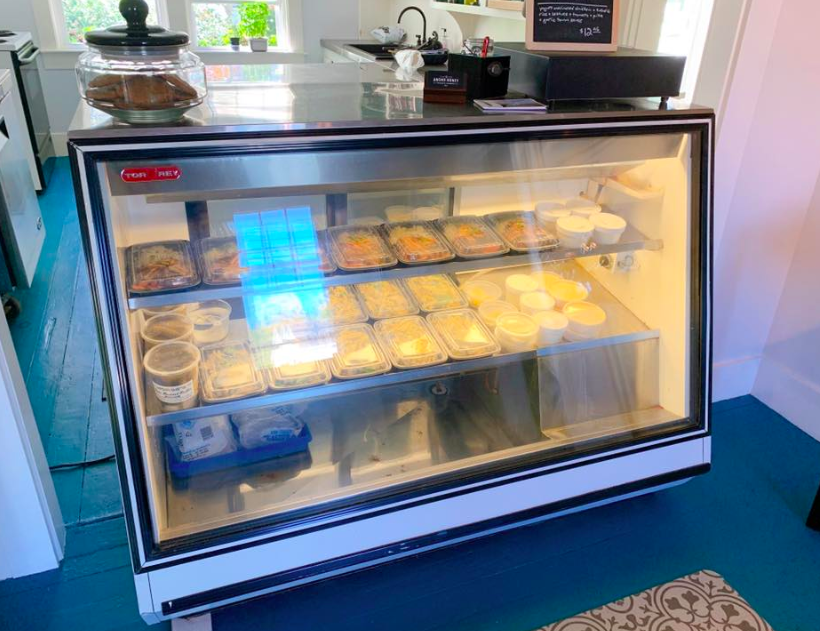
Think about the last time someone gave you a business card. You probably shoved it in a pocket or wallet, where it traveled around with you for a few months before making a pit stop on your nightstand before its eventual destination in the trash can, or getting shredded to smithereens by your washing machine.
Now, consider how a house-branded item can reinforce your brand in the minds of your customers far better than any business card. Create a recipe that your customers really love, and every time they reach into the fridge for another taste, they’ll see your logo, remember your food and how adorable your restaurant is, and mentally schedule a time to visit again. That keeps customers returning far more effectively than any little scrap of flimsy cardboard.
The Opportunities for Sampling are Built Right in.

Introducing a new small-batch product at retail can be difficult, because most customers are already loyal to the huge national brands who spend billions of dollars each year convincing them that their chips are the cheesiest. Gaining a foothold in the market when you’re competing with large-scale corporations who spend more money on a single television commercial than you’ll ever make in your life can be next to impossible.
But if you own a restaurant, you have a unique opportunity to get your product in front of customers that even the biggest brands can’t compete with. Consider incorporating some of your retail items into your dishes; for example, if you make a killer pulled pork sandwich, use the barbecue sauce that’s available in your retail section.
Do you make better pickled jalapenos than customers can find at the supermarket? Showcase them on a burger, and make sure to mention to customers who compliment them that they can pick up a jar of their very own. This kind of “on the fly” sales pitch can turn restaurant customers into retail customers, while also contributing to increased per-visit revenue.
Learn More: 8 Specific Ways I Saved Money Opening My Restaurant
In Conclusion
If you have an empty shelf or a forgotten corner of your restaurant, consider rolling out a small-batch retail line. The barrier to entry is surprisingly low, the risk is minimal, and the opportunities to extend your restaurant brand into people’s home kitchens is nearly limitless.
Plus, you’ll always have plenty to do to continue to generate revenue during your slower times, which has led to a new slogan I use with my sometimes-less-than-motivated teenaged staff: “If you have time to lean, you have time to…can a batch of artisanal small-batch chile-infused honey.”

